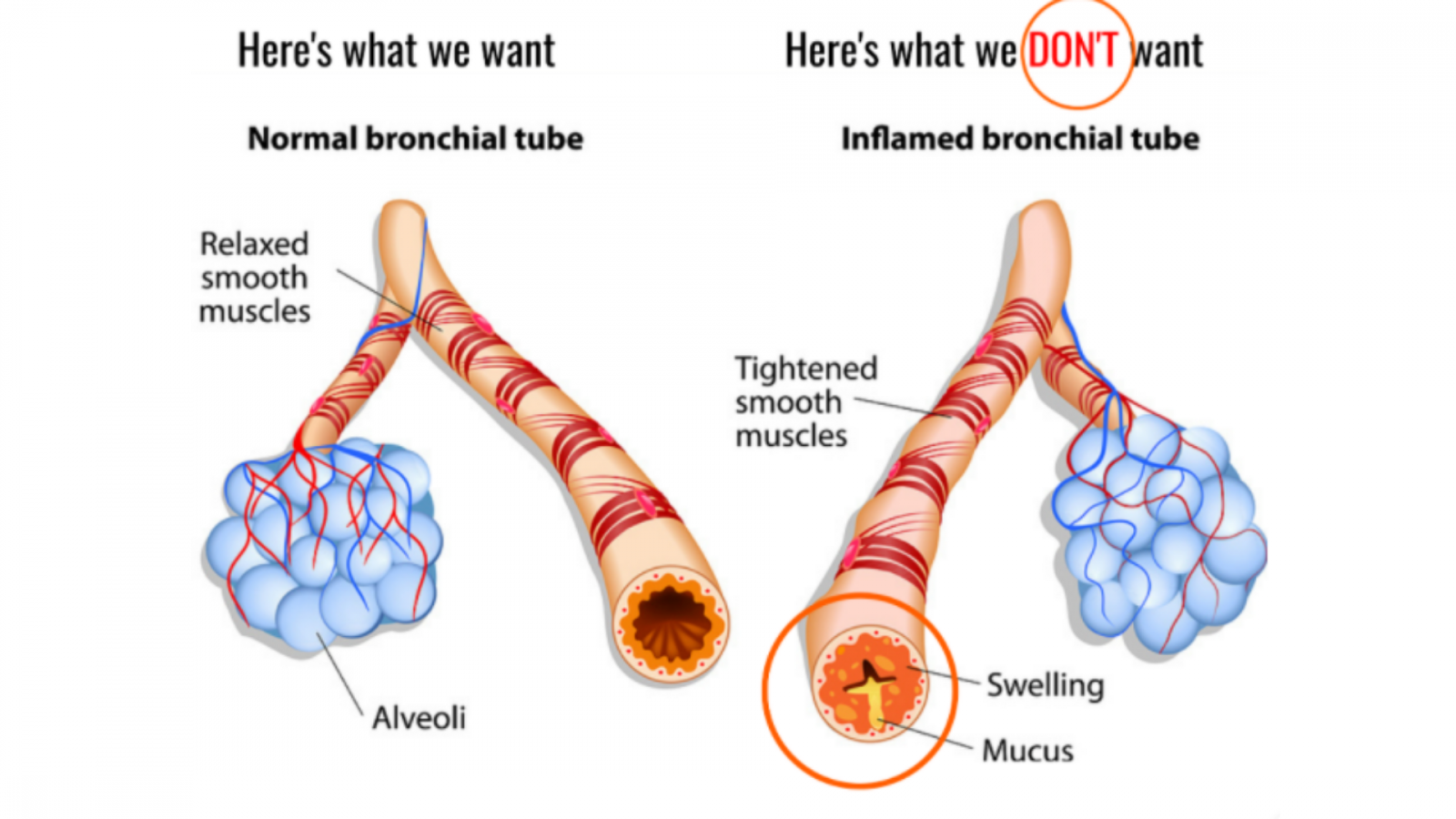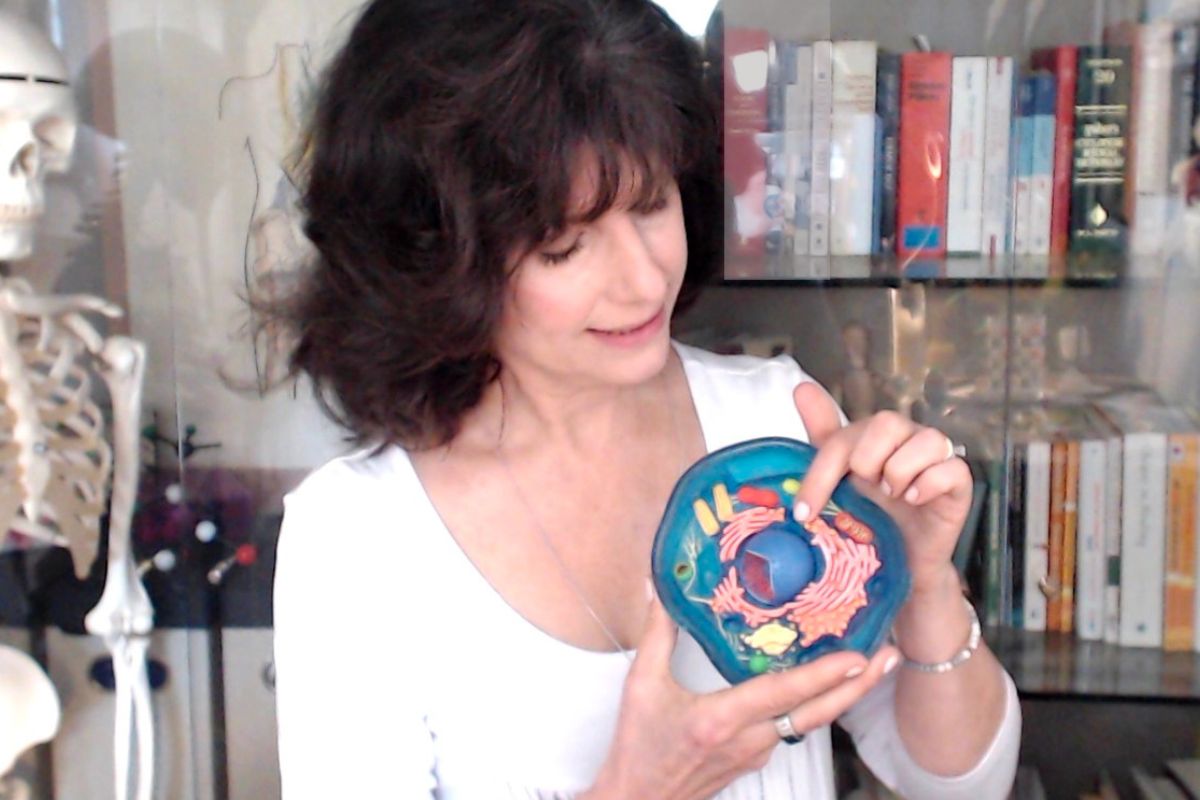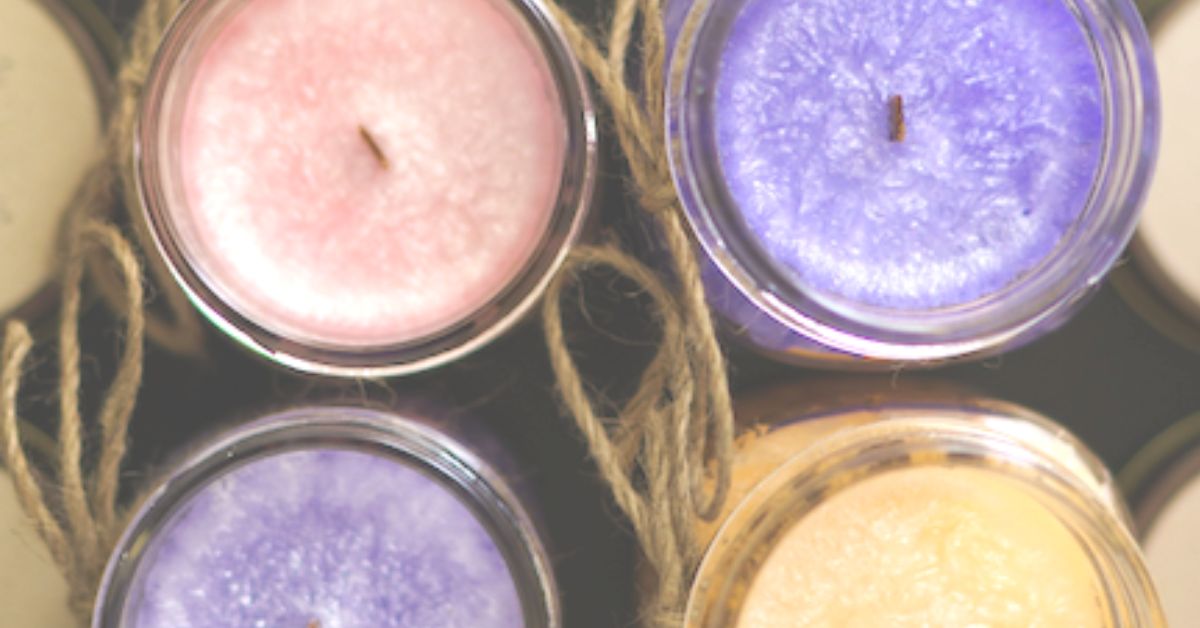Are Candles Bad for You?
Are candles bad for you? They can be. Here is how to choose ones that are safe for you, your family, and your home.
Scented Candles can calm us, invigorate us, and elicit memories.
They can empower us with the sense of possibility that a good mood can bring.
Using scented candles can be positive for our wellness and health.
A SIMPLE Self Care tool.
Lighting a candle each mealtime can be a very nice calming ritual for you/your family.
Here is one reason why lighting scented candles is a good self care idea.
…fragrances directly and/or indirectly affect the psychological and physiological conditions of humans.
(1)
The study goes on to share that fragrances have been shown to provide positive psychological and physiological benefits for our entire family.
How we choose candles:
It has been researched and documented that fragrance is how most of us chose our candles.
The National Candle Association reports that:
…by far the most important characteristic that impacts candle purchases is fragrance.
(2)
The TYPE of fragrance our candles have is very important.
A synthetic fragrance can harm us.
Two other very important considerations are the candles:
- wick material and
- the candle material.
All 3; The fragrance, wick, and material the candle is made of can put toxins into the air we breathe.
Starting with the fragrance.
The downfall of using scented candles is that our man-made synthetic scents and even ‘natural’ materials emit compounds called VOCs.
VOCs are gases released into the air from products like candles or processes like burning candle wicks and the candle material (typically paraffin) itself
(3)
It is important to know:
Scented candles are potent sources of VOC emission. The VOCs emit even if the candles are not lit.
(4)
We inhale the air in our homes into our noses. This is how we bring oxygen into our bodies. We need a lot of oxygen to fuel all of our cells.
There can be a downside to this ease of air going into our bodies. The downside is-
We cannot escape VOC’s that are lingering in our home’s air.
(1) (6) (7) (8)

VOCs enter your body each time you inhale.
As you breathe you carry in the VOCs along with all else that’s in your air
If there is one thing we do A LOT— it is breathe!
An adult averages approximately 10,000 liters of air every day.
(9)
The air you breathe in passes by your Olfactory Nerves transmitting nerve impulses of odors in the air to your olfactory bulb.

The olfactory bulb “sends information to the other areas of your body.
The odors take a direct route to the regions of your brain that are related to emotion and memory.
(2)
Your central nervous system responds to pleasant smells with a positive mood boost. (or in other cases outside of the scented candle example the ‘scent messaging’ may protect us by letting us know something is wrong- Sour milk? Something burning?)
How cool is that!
What an amazing body mechanism!
What we smell impacts our entire body! Our emotions, our memories!
To safeguard this amazing sense we need to pay attention to what we place into our home’s air.
Related: How Scent can be a Simple Self Care Tool
Let’s run through a quick list of where your inhaled air goes next.
The air you breathe in:
- continues down to your lungs
- moves through tubes that look like tree branches.
- these tubes get smaller and smaller
- at the end is a bulb-like sac where
- the oxygen is able to move into your bloodstream
- reaching your cells.

We can protect our entire body by protecting our air!
“When we use scented candles, the harmful small particles, gases, the VOC (Volatile Organic Compounds) are given off, even when unlit they enter our body along with each breath.” (4)
☀️ This actually applies to many items in your home that emit VOCs.
Laundry detergents, static clings, scented gels, air fresheners. To name just a few.
Post category
Healthy Home
Simple Swaps for Your Home
Chronic exposure to VOCs (even ones you cannot smell) can slowly damage wellness and health. These days we have multiple sources in our homes.
The awareness that materials we have in our homes and the products we bring into our homes can impact what’s in the air we breathe can be applied throughout your house.
Reducing and even eliminating, where we can, our exposure to VOC compounds helps Protect the damage they can cause to:
- cells of our brain,
- respiratory system,
- cardiovascular systems,
- our ability to use fat cells as fuel,
- our mood,
- our nervous tension-agitation,
- HPA mechanism, detoxification mechanism promoting sensations of anxiousness,
- higher heart rate, pain-inducing inflammation….
We are well served when we swap out items that emit VOCs.
By swapping out the typical scented candle for one that improves our air quality we keep the good and get rid of the bad.
Swapping out the typical scented candle means the air we breathe in will get us the oxygen we need without causing damage.

Over time our goal is to have indoor air as free from VOCs as possible.
This way the air that travels into our nose can positively impact our:
- olfactory nerves,
- olfactory bulb,
- brain
- lungs protected,
- brachial branches to our little sacs
The air moving through our bloodstream providing our cells with the oxygen needed to live will not be toxic.
Our lungs and our brain are very important to protect. As is our immune system.
If we use candles that emit VOCs our immune system gets called upon. Its response is to generate inflammation.
This inflammation is to protect us.
Our body increases inflammation in an attempt to expel the toxins we breathe in and circulate.
Inflammation is a core way our body works to protect us.
An example of VOC-induced chronic inflammation is Asthma.

Our body tries to protect us from anything foreign. Virus, bacteria, and VOCs….with a temporary inflammatory response. Chronic VOC exposure creates chronic inflammation.
The bronchial tubes are just one example.
“ some VOC’s are trapped by the kidneys, heart, brain, and bones, or are neutralized by our immune system, which attacks foreign bodies and stores them in immune cells….it has recently been observed that some of these pollutants do reach the placenta and the foetus, and can even penetrate our brains…..once they have penetrated our organs, it appears that these foreign bodies cannot be eliminated. This means that they accumulate, creating a chronic and continuous low-level inflammation that has a negative impact on our health.” (color & bold added) (11)
Knowing how the scented candles in my home could negatively impact my body and the health of my family I researched what Simple Straightforward Solution could be made. The answer was 100% Beeswax Candles. Organic Essential Oils.
A few things I’ve learned along the way.
ADDED NOTES of things I’ve learned along the way.
🔸 Pure Beeswax can be labeled with only 51% beeswax so be sure you know it’s 100% beeswax.
🔸 Beeswax can cost as much as six times more than paraffin which is why many candle manufacturers blend paraffin with their beeswax to cut costs. So again always confirm 100% beeswax.
🔸 As for the price the slow even burn has proven to me again and again that the higher quality candle is worth the extra price it lasts so much longer.
🔸 I opt not to use vegetable wax anymore. I have tried many, many over the years —even good vegetable wax candles may still end up burning faster emitting the soot
For me, Beeswax burns so much slower, is more even, lasting longer plus I like that it is known to emit more negative ions.
This is why I’ve narrowed my candles down to 100 percent beeswax and not listed others.
Scents
‘Natural’ Fragrances can still emit VOCs. VOC encompasses a huge variety of both natural and man-made chemicals. Sticking to 100% Essential Oil is your best option and Simplifies my choices. My number 1 priority is protecting my cells and my family, 100% Scented Beeswax does the trick.
The Essential Health Focused Action we can take to protect ourselves, our family, our home:
With these 3 swaps, we can continue the psychological and physiological benefits scented candles offer without the dangers.
Here’s how to keep the good & snuff out the bad.
Choose candles that use these 3 materials. (See what I did there- snuff out the bad 😂)

Wick
Wick Matters
Fact: Lead wicks have been banned in many Countries and since 2003 in the US. as well.
Debate: Are the other wicks safe?
Alternative wicks listed by the CDC include zinc, hemp, multiple other synthetic fibers, paper, and cotton.
My Suggestion: Cotton

Material
Material Matters
Fact: The most common material is paraffin. When burned it gives off harmful fumes (toluene and benzene) both linked to asthma and cancer 3
Debate: Is the amount of toxin really too harmful?
Other Materials Vegetable Bases and Beeswax.
My Suggestion: 100% Beeswax

Scent
Scent Matters
Fact. Scented Candles emit VOC’s whether they are lit or not!
Debate: Is the amount of toxin too harmful? Do ‘Natural’ and all Synthetic Scents emit VOC’s?
Alternative? Organic Essential Oils & the Natural Scent of 100% Beeswax.
My Suggestion: Organic Essential Oils & Beeswax
Simple Self Care TIP
Swap out toxic candles for non-toxic candles.
– What we place in the air of our homes enters and impacts our bodies.
– A core way our body works to protect us from VOCs is inflammation.
– A core way our body goes awry is when chronic exposure sets our body into chronic inflammation and it starts destroying our tissues instead of protecting them.
Choosing Non-toxic, Safe Scented Candles enables us to reap the psychological and physiological benefits Candles offer.
The wick, materials, and scent type we choose can protect ourselves, our families, and our homes.
Non-toxic Candles are Linked For You on the Products for Your Home
Products for Your Home
Non-toxic Kitchen, Laundry, Bedding, & Living Space Products…
Related Post:
The References I put together for you are further down.
The Simple Self Care Lifestyle
THe simple self care lifestyle
Simplify
self care
Post categories







I’m glad you are here…
SHOP Products
Personal Products
Healthy Home
Quality Supplements
Things to Keep Handy
Quality Food Sources
Simple Self Care Programs

The Simple Self Care Lifestyle
MOtivator APP
References for you:
- Sowndhararajan, Kandhasamy, and Songmun Kim. “Influence of Fragrances on Human Psychophysiological Activity: With Special Reference to Human Electroencephalographic Response.” Scientia pharmaceutica vol. 84,4 724-751. 29 Nov. 2016, doi:10.3390/scipharm84040724
- National Candle Association. 529 14th Street NW, Suite 1280 Washington, DC 20045 https://candles.org/candle-science/
- Dr. Ruhullah Massoudi (2009) Frequent use of certain candles produces unwanted chemicals. https://www.scsu.edu/news_article.aspx?news_id=832
- Ahn JH, Kim KH, Kim YH, Kim BW. Characterization of hazardous and odorous volatiles emitted from scented candles before lighting and when lit. J Hazard Mater. 2015 Apr 9;286:242-51. doi: 10.1016/j.jhazmat.2014.12.040. Epub 2014 Dec 31. PMID: 25588193.
- Otavio Ranzani (2020) How Does the Air We Breathe Affect Us? Environmental Health.
- Colleen Walsh (2020) ‘What the nose knows’ https://news.harvard.edu/gazette/story/2020/02/how-scent-emotion-and-memory-are-intertwined-and-exploited/#:~:text=Smells%20are%20handled%20by%20the,related%20to%20emotion%20and%20memory.
- Wikipedia contributors. “Olfactory nerve.” Wikipedia, The Free Encyclopedia. Wikipedia, The Free Encyclopedia, 31 Aug. 2020. Web. 28 Sep. 2020.
- University of Toronto. “Scientists uncover new connection between smell and memory: Findings offer opportunities for improved smell tests in Alzheimer’s disease diagnosis.” ScienceDaily. ScienceDaily, 23 July 2018.
- Derudi M, Gelosa S, Sliepcevich A, Cattaneo A, Cavallo D, Rota R, Nano G. Emission of air pollutants from burning candles with different composition in indoor environments. Environ Sci Pollut Res Int. 2014 Mar; 21(6):4320-30. doi: 10.1007/s11356-013-2394-2. Epub 2013 Dec 7. PMID: 24318837.










